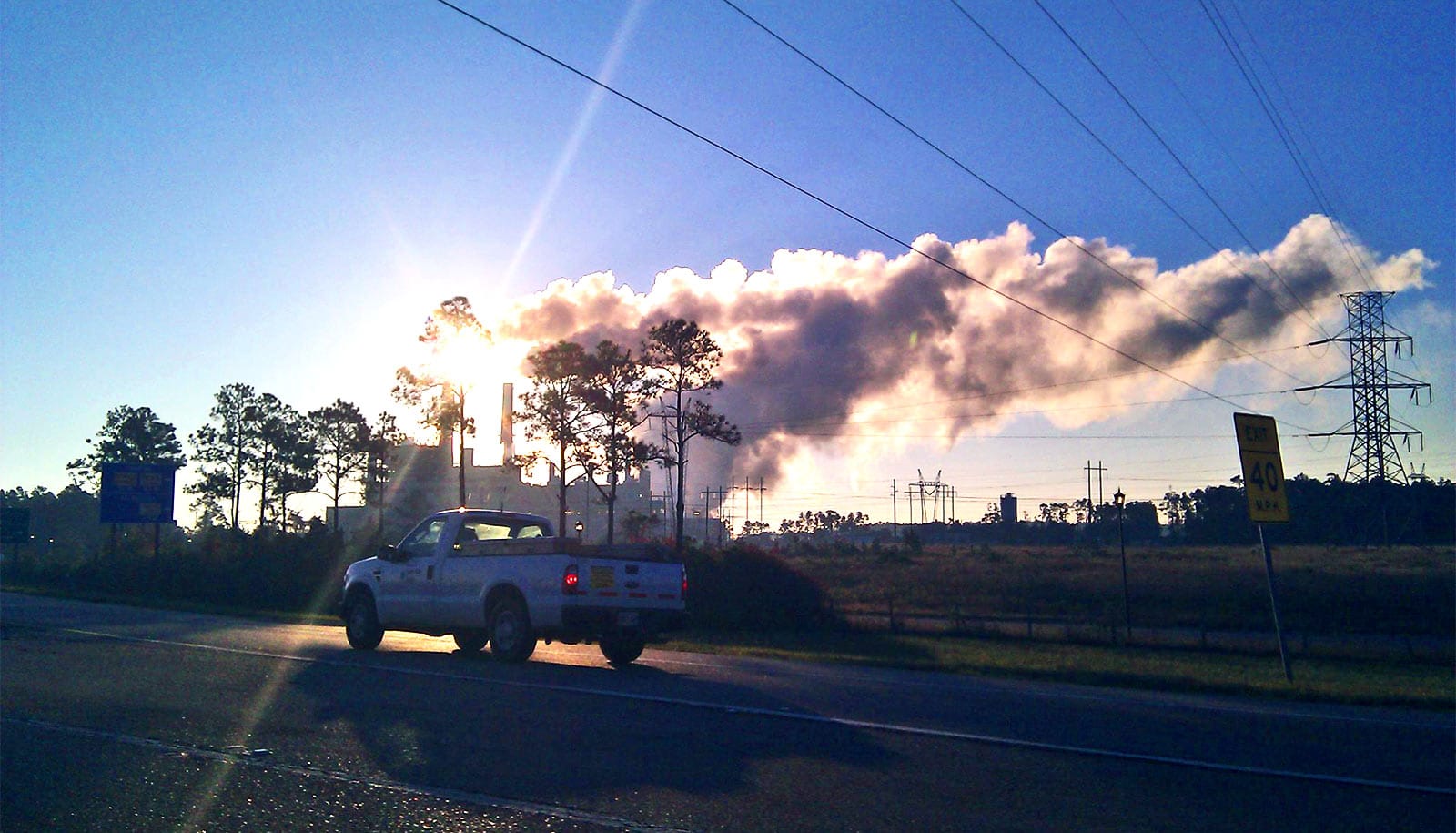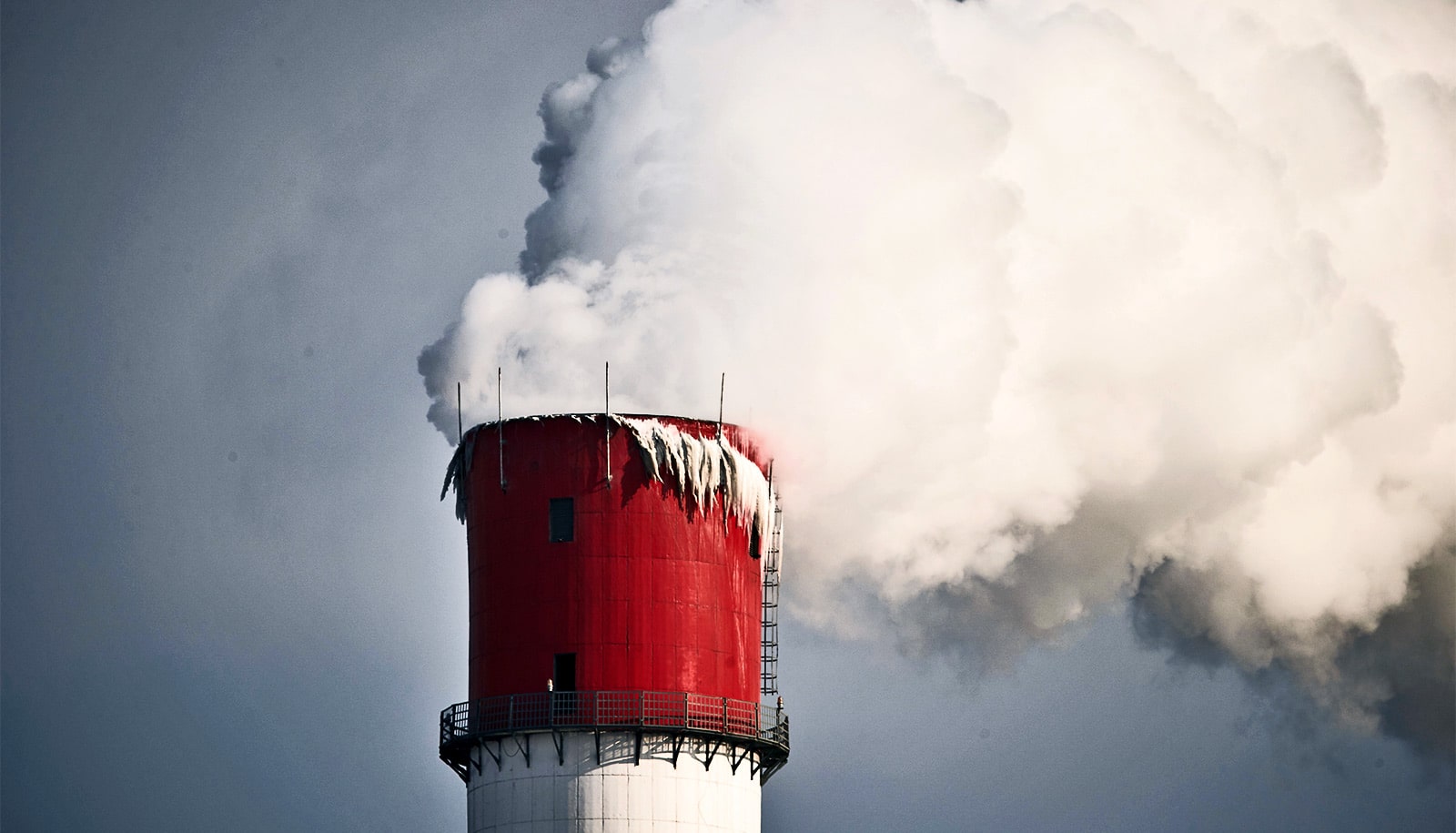Air pollution exposure disparities among people of color and white people are driven by nearly all, rather than only a few, emission source types, a new study shows.
Previous studies have shown that people of color are disproportionately exposed to air pollution in the United States. However, it was unclear whether this unequal exposure is due mainly to a few types of emission sources or whether the causes are more systemic.
“Our study reinforces previous findings that race, rather than income, is what truly drives air pollution-exposure disparities.”
The new study in Science Advances modeled peoples’ exposure to air pollution based on race/ethnicity and income level.
“We find that nearly all emission sectors cause disproportionate exposures for people of color on average,” says coauthor Julian Marshall, a professor of civil and environmental engineering at the University of Washington. “The inequities we report are a result of systemic racism: Over time, people of color and pollution have been pushed together, not just in a few cases but for nearly all types of emissions.”
Patterns in air pollution exposure
The team used an air quality model to analyze Environmental Protection Agency data for more than 5,000 emission source types, including industry, agriculture, coal electric utilities, many types of vehicles and equipment, construction, and other miscellaneous small emissions sources. Each source type studied contributes to fine particle air pollution, defined as particles being 2.5 micrometers or less in diameter, the study reports.
To identify patterns of air pollution exposure associated with race/ethnicity and income, the researchers combined the spatial air pollution patterns predicted in their air quality model with residential population counts from the US Census Bureau.
For the 2014 US total population average, fine particulate air pollution exposures from the majority of source types are higher than average for people of color and lower than average for white people. The results indicate that white people are exposed to lower-than-average concentrations from emissions source types that, when combined, cause 60% of their total exposure, the study reports.
Conversely, people of color experience greater-than-average exposures from source types that, when combined, cause 75% of their total exposure. This disparity exists at the country, state, and city level and for people within all income levels.
“Community organizations have been experiencing and advocating against environmental injustice for decades,” says corresponding author Christopher Tessum, a civil and environmental engineering professor at the University of Illinois Urbana Champaign.
“Our study contributes to an already extensive body of evidence with the new finding that there is no single air pollution source, or a small number of sources, that account for this disparity. Instead, the disparity is caused by almost all of the sources.”
Race, not income
The researchers found that air pollution disparities arise from a more systemic set of causes than previously understood.
“We were struck by how these systemic disparities exist for people of color not only in certain neighborhoods but at every spatial scale in the US,” says coauthor Joshua Apte, a professor of civil and environmental engineering at the University of California, Berkeley. “The problem exists within urban and rural areas, many distinct US regions, and for people living within almost all American cities.”
The study results come with caveats, the researchers say. For example, the study focuses on outdoor air pollution concentrations in places where people reside and does not account for variability in mobility, access to health care, and baseline mortality and morbidity rates, among other factors.
“This new study adds context to our previous work, which showed that a disproportionate consumption of goods and services—which is an underlying cause of pollution—compounds the exposure of people of color to air pollution,” says coauthor Jason Hill, a professor of bioproducts and biosystems engineering at the University of Minnesota.
The researchers hope these findings will highlight potential opportunities for addressing this persistent environmental inequity.
“Some assume that when there is a systematic racial-ethnic disparity, such as the one we see here, that the underlying cause is a difference in income,” Tessum says. “Because the data shows that the disparity cross-cuts all income levels, our study reinforces previous findings that race, rather than income, is what truly drives air pollution-exposure disparities.”
Additional coauthors are from the University of Texas at Austin and the University of Washington. The EPA provided financial support for this study through the Center for Air, Climate, and Energy Solutions (CACES).
Source: University of Washington



